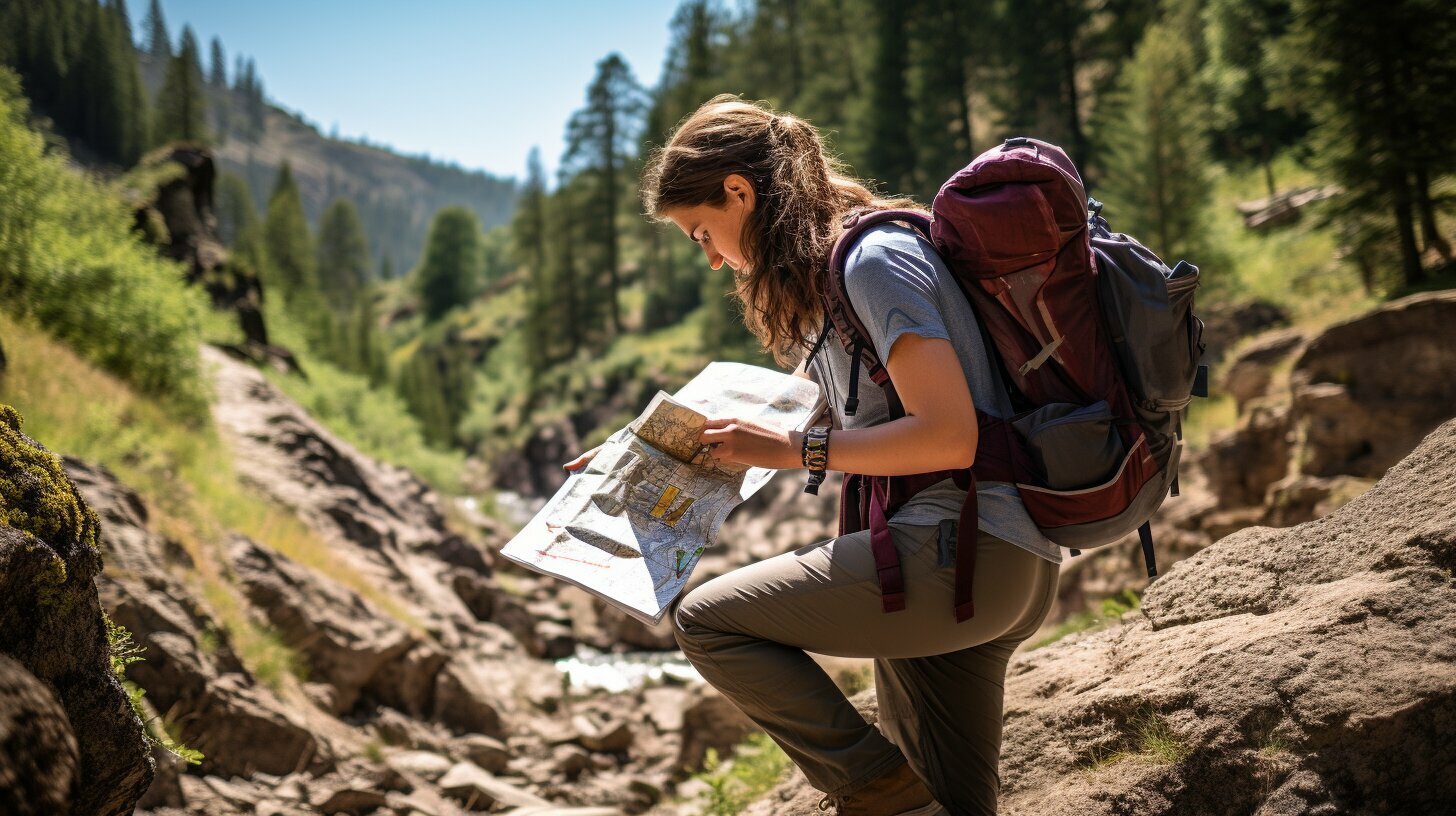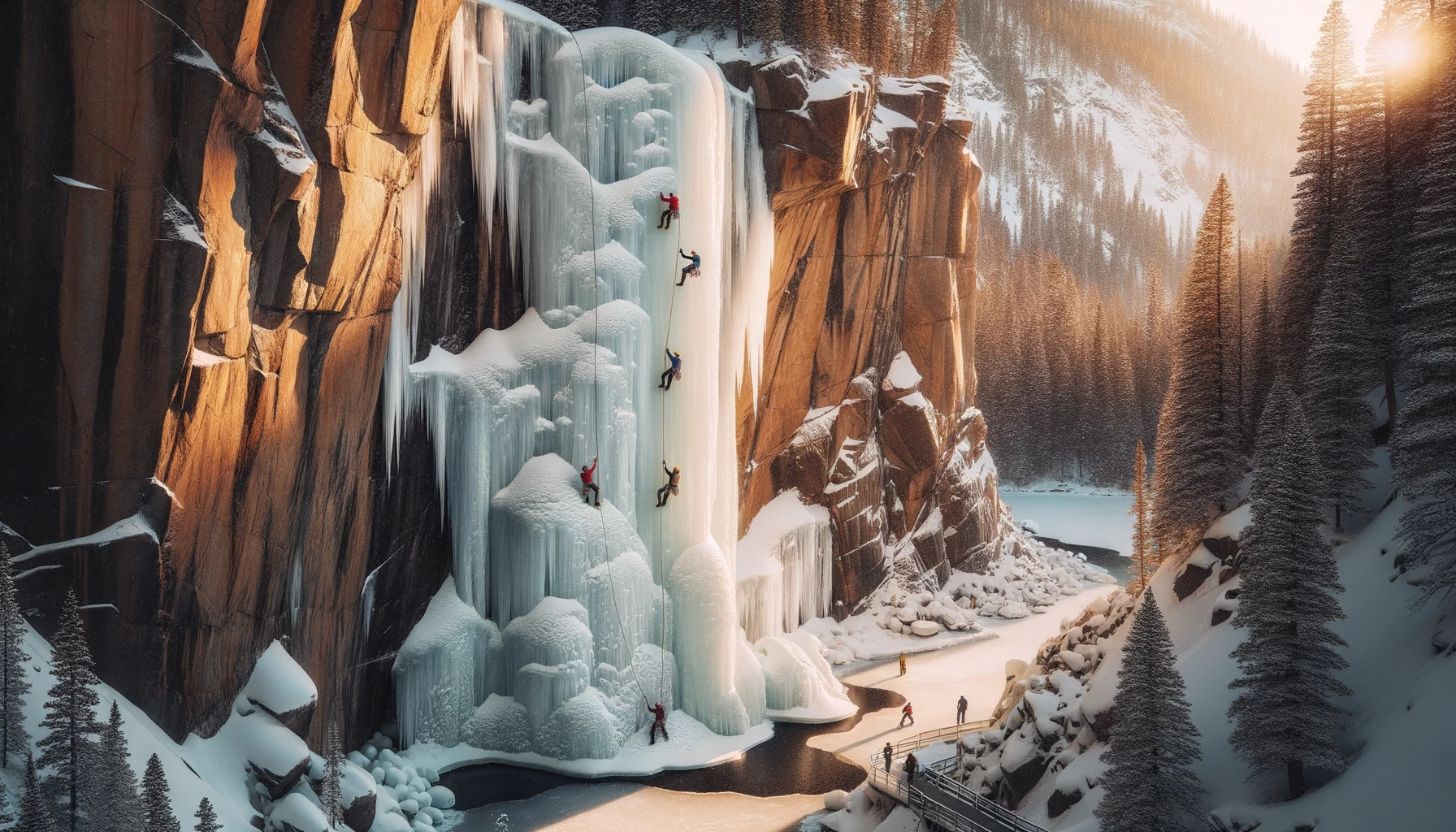If you’re planning to hit the trails, it’s important to prioritize safety. Hiking can be a fun and rewarding experience, but it also comes with risks. By taking the necessary precautions and preparing properly, you can minimize those risks and make the most of your outdoor adventure.
In this article, we’ll outline some essential hiking safety tips that everyone should know. From planning and preparation to staying hydrated and nourished, we’ll cover everything you need to stay safe on the trail.
Key Takeaways
- When it comes to hiking, safety should always come first.
- Proper planning and preparation are key to minimizing risks on the trail.
- Staying hydrated and nourished, dressing appropriately, and staying aware of wildlife and nature hazards are all important factors to consider.
Plan and Prepare for Your Hike
Before embarking on your hiking adventure, it’s crucial to plan and prepare for a safe and enjoyable experience. Follow these hiking safety guidelines and create a hiking essentials checklist to ensure you have everything you need for a successful trip.
Research the Trail
Researching the trail ahead of time can help you anticipate any potential hazards or challenges you may encounter on your hike. Look up trail maps, read reviews from other hikers, and check the difficulty rating to ensure you are selecting a trail that matches your fitness level and experience.
Disclosure: When you buy through links on our site, we may earn an affiliate commission.
Check the Weather
Checking the weather before your hike is essential for preparing for unexpected changes in conditions. Bring appropriate clothing and gear for rain, wind, or sun, depending on the forecast. It’s always better to be over-prepared than under-prepared.
Create a Hiking Essentials Checklist
Creating a hiking essentials checklist will help you pack everything you need for your hiking adventure. Include items such as water, snacks, a first aid kit, navigation tools, extra clothing, and emergency shelter options. Refer to your checklist before your trip to ensure you don’t forget anything important.
Follow these hiking safety guidelines, and be sure to plan and prepare for your hike to reduce the risk of accidents or injuries on the trail. By doing so, you can enjoy your time in nature to the fullest.
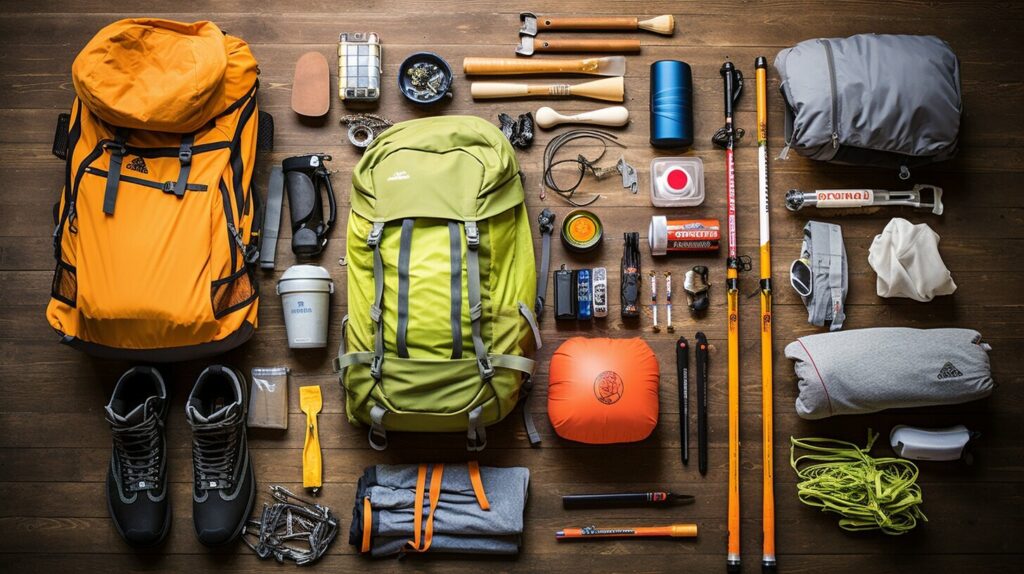
Know Your Limits and Choose Suitable Trails
When planning for a hike, it’s important to consider your physical limits and choose a trail that matches your fitness level and experience. Hiking can vary widely in difficulty, from leisurely strolls through well-maintained paths to strenuous climbs over rocky, uneven terrain. Make sure to research the trail before you set out to ensure it aligns with your abilities.
Trail difficulty ratings can be helpful but keep in mind that they can be subjective and vary between trails. It’s important to take into consideration factors such as the length of the hike, the elevation gain, and the terrain. You should also consider environmental conditions, such as high altitude, heat, or humidity, which can impact the difficulty of the hike.
Staying within your comfort zone is crucial for your safety and enjoyment on the trail. Pushing yourself too hard can lead to exhaustion, injury, or getting lost. Remember that hiking is not a competition or a race; it’s about enjoying the great outdoors at your own pace.
| Hiking Precautions: | – Know your physical limits and select a trail that matches your fitness level and experience. |
|---|---|
| Trail Safety Measures: | – Research the trail before setting out to ensure it aligns with your abilities. – Consider trail difficulty ratings, terrain, and environmental conditions. – Stay within your comfort zone to ensure your safety and enjoyment on the trail. |
By following these hiking precautions and trail safety measures, you can ensure a safe and enjoyable hiking experience. Remember to always prioritize your safety and be honest with yourself about what you’re capable of. With some careful planning and the right mindset, you can tackle any trail with confidence.
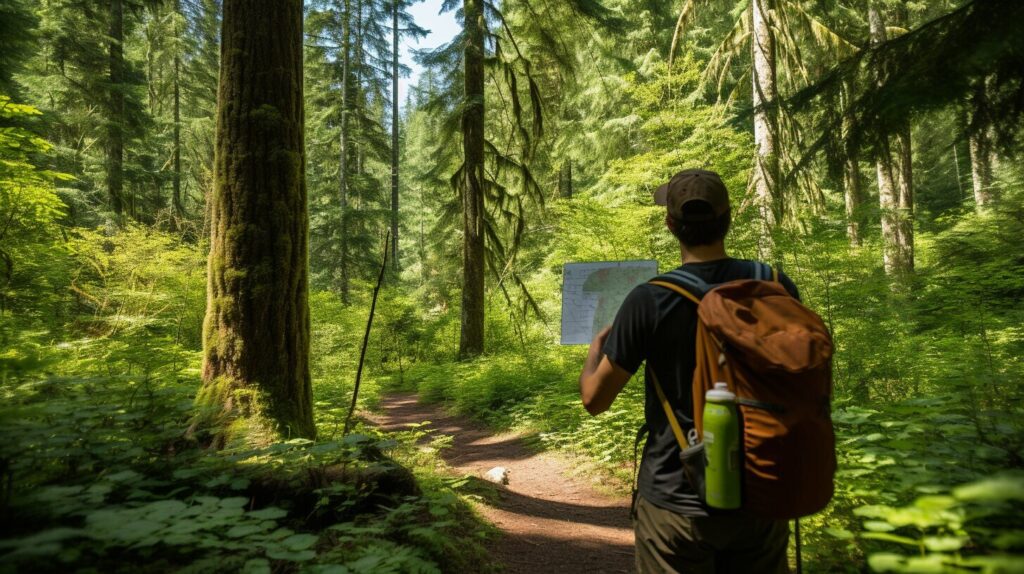
Pack for Safety and Survival
One of the most important aspects of hiking safety is being prepared for emergencies. When embarking on a hike, it’s essential to pack all the necessary items for safety and survival. Below is a wilderness essentials checklist that you should consider bringing with you on all your hikes:
| Item | Purpose |
|---|---|
| First aid kit | To treat minor injuries and wounds |
| Navigation tools | To avoid getting lost or disoriented |
| Extra food and water | To sustain your energy levels and prevent dehydration |
| Emergency shelter options | To shield you from rain, wind, or sudden temperature drops |
| Multi-tool or knife | To cut ropes, sharpen sticks, or prepare food |
| Fire starter | To build a fire for warmth, cooking, or signaling for help |
| Emergency whistle | To alert others in case of distress or danger |
| Headlamp or flashlight | To navigate in low light conditions or emergency situations |
Aside from bringing the items listed in the wilderness essentials checklist, it’s also important to acquire basic wilderness survival skills. These skills may come in handy in case of an emergency and could save your life. Some skills to consider learning are:
- Building a shelter using natural materials
- Locating and purifying water sources
- Starting a fire using different methods
- Identifying edible plants and insects
- Signaling for help using visual and auditory cues
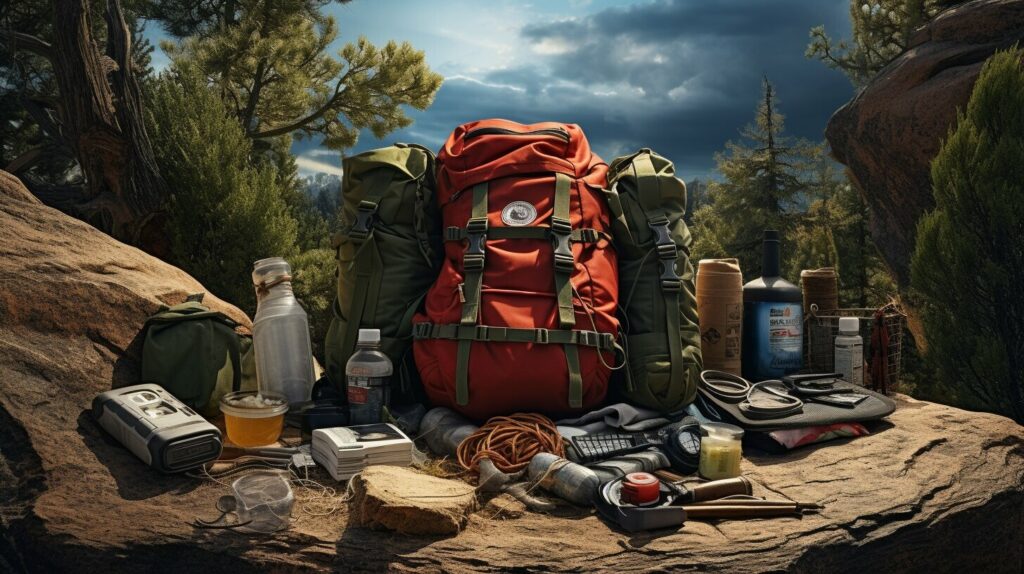
By packing for safety and survival, and learning basic wilderness survival skills, you can be prepared for unforeseen circumstances while hiking. Remember, proper planning and preparation can make a difference between a safe hiking trip and a dangerous one.
Dress Appropriately for the Trail
Proper attire is essential for a safe and comfortable hike. Dressing appropriately means considering the trail terrain, weather conditions, and your own comfort level. Follow these hiking safety guidelines to ensure you’re dressed for success:
Layer Clothing for Comfort and Protection
Wearing layers allows you to regulate your body temperature as you hike, keeping you comfortable and reducing the risk of overheating or hypothermia. Start with a moisture-wicking base layer, add an insulating mid-layer, and top it off with a waterproof outer layer. Choose lightweight, breathable materials that won’t weigh you down or trap sweat.
Choose the Right Footwear
Wear proper hiking boots or shoes with good ankle support and traction. They should fit comfortably and be broken in before hitting the trail. Avoid sandals or sneakers, which lack the necessary support and protection for rugged terrain.
Check the Weather Forecast
Before embarking on your hike, check the weather forecast and dress accordingly. Bring rain gear and extra layers if rain or colder temperatures are expected.
Protect Yourself from the Sun
Wear a wide-brimmed hat and use sunscreen to protect yourself from the sun’s harmful rays. Don’t forget to reapply sunscreen regularly throughout the day.
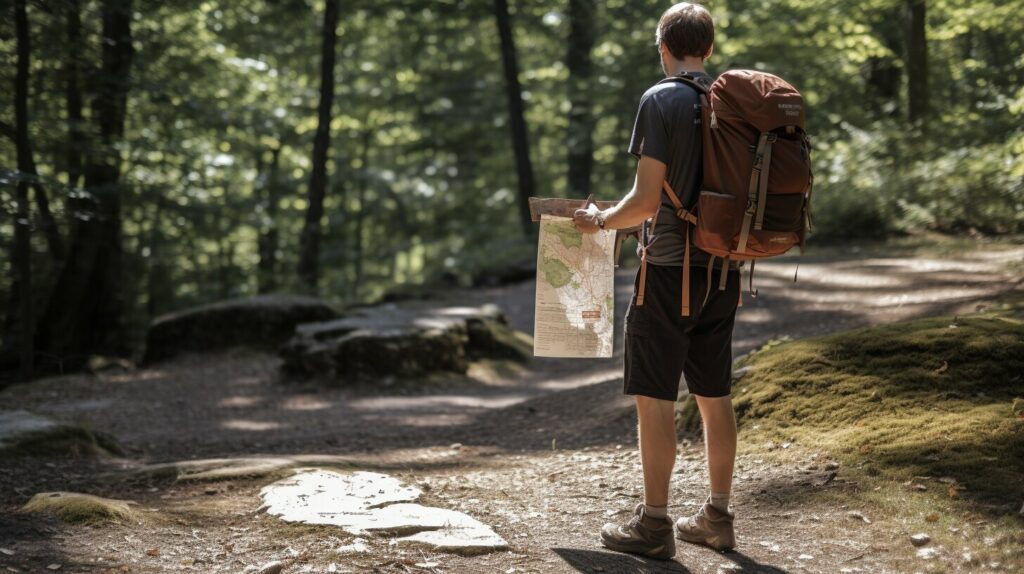
Stay Hydrated and Nourished
One of the most important hiking safety tips to keep in mind on the trail is to stay hydrated and nourished. It’s crucial to maintain your energy levels and prevent dehydration, especially on longer hikes or in hot weather conditions. Here are some essential hiking tips to help you stay hydrated and nourished:
- Carry enough water: You should carry at least two liters of water per person for a day hike. Don’t rely on natural water sources unless you have a reliable water filtration system.
- Purify water: If you do need to purify water from natural sources, bring a water filtration or purification system. Boiling water for at least one minute can also kill most microorganisms.
- Bring enough food: You should bring enough food to match the length and difficulty of your hike. Pack snacks that are high in protein and carbohydrates to keep your energy levels up.
- Schedule snack breaks: Plan to take short breaks every hour or so to snack and drink water. This will also help you pace yourself and avoid fatigue.
With these hiking safety guidelines in mind, you’ll be able to stay hydrated and nourished throughout your hike. Remember, your body is your best survival tool, so take care of it!

Hike with a Buddy or Let Someone Know Your Plans
Hiking alone can be peaceful and empowering, but it can also be dangerous if something goes wrong. It is always recommended to hike with a buddy or a group, especially if you are a beginner. Having someone with you can help you in case of an emergency, and it can also make the hike more enjoyable.
If you do decide to hike alone, be sure to let someone know your hiking plans. This can be a family member, friend, or even the park ranger. Let them know where you are going, what trail you are taking, and when you plan to return. If something happens and you don’t return on time, someone will be able to alert the authorities and start a search and rescue operation.
It’s essential to follow hiking precautions and trail safety measures when hiking with a buddy or hiking alone. Always stay on the designated trail, carry a map and compass, and stay aware of your surroundings. If you are hiking with a buddy, make sure you stay within sight and sound of each other.
Remember, hiking safety is everyone’s responsibility. By following these simple hiking precautions and trail safety measures, you can enjoy your time on the trail and reduce the risk of injury or accidents.

Be Aware of Wildlife and Nature Hazards
While hiking, it’s important to be aware of potential wildlife and nature hazards. Being prepared can help you avoid dangerous situations and ensure your safety on the trail.
One of the most important wilderness safety tips is to respect wildlife. Observe animals from a safe distance and avoid approaching them. Do not feed them, as this can alter their natural behavior and put you at risk. If you encounter a bear or other large animal, make yourself appear larger by raising your arms and standing on your tiptoes. Speak in a calm voice and slowly back away.

Another important wilderness safety tip is to protect yourself from insects and other pests. Wear long sleeves and pants, and use insect repellent to avoid bites and stings. Be aware of snakes and other venomous creatures, and avoid putting your hands or feet where you can’t see them.
It’s also important to be aware of natural hazards such as cliffs, unstable terrain, and falling rocks. Pay attention to warning signs and stay on designated trails to avoid these dangers. If you need to cross a stream or river, choose a wide, shallow area and use a hiking pole for support.
By following these wilderness safety tips and trail safety measures, you can stay safe and enjoy your hiking adventure to the fullest. Remember to always respect nature and be mindful of potential hazards.
Stay on the Trail and Leave No Trace
Staying on designated trails is not only important for your own safety but also for the conservation of natural resources. Straying off the path can cause erosion, damage to plants, and disturb natural habitats. When hiking, always stay on the designated trail to minimize your impact on the environment.
Additionally, practicing Leave No Trace principles is essential for minimizing the impact of human activities on the environment. This means packing out all trash, disposing of waste properly, and avoiding damage to plants and wildlife. When hiking, bring a trash bag with you and dispose of all trash in proper receptacles at the end of your hike.
Remember to also respect wildlife and their habitats by viewing them from a safe distance. Do not feed animals or disturb their natural behavior. Keep a safe distance from any wildlife encountered on the trail and avoid approaching them.

By staying on the trail and practicing Leave No Trace principles, you can help preserve our natural resources for future generations to enjoy.
Conclusion
You are now equipped with the essential hiking safety tips that every hiker should know. Remember to plan and prepare before embarking on your hiking adventure, know your physical limits, and choose suitable trails. Pack the essential items for safety and survival, dress appropriately for the trail, and stay hydrated and nourished while hiking.
Always hike with a buddy or let someone know your plans, stay aware of wildlife and nature hazards, and stay on designated trails while practicing Leave No Trace principles. By following these guidelines, you can embark on your hiking adventures with confidence, knowing you have the necessary knowledge to stay safe on the trail.
Stay Safe on the Trail with Hiking Safety Tips
Don’t let the fear of the unknown keep you from experiencing the beauty of nature. Whether you’re a beginner or an experienced hiker, taking the necessary precautions and following these hiking safety tips will ensure a safe and enjoyable hiking experience. Happy trails!
FAQ
Q: What are hiking safety tips?
A: Hiking safety tips are guidelines and precautions that hikers should follow to ensure their safety while on the trail. These tips cover various aspects such as planning and preparation, trail selection, packing essentials, dressing appropriately, staying hydrated and nourished, hiking with others, being aware of wildlife and nature hazards, staying on designated trails, and practicing responsible outdoor etiquette.
Q: Why is planning and preparation important before a hike?
A: Planning and preparation are important before a hike because they help hikers be well-informed and equipped. Researching the trail, checking the weather forecast, and creating a hiking essentials checklist can help ensure a safe and enjoyable hiking experience.
Q: How do I choose a suitable trail?
A: It is important to know your physical limits and choose a trail that matches your fitness level and experience. Consider trail difficulty ratings, terrain considerations, and always stay within your comfort zone to avoid potential risks or accidents.
Q: What should I pack for safety and survival during a hike?
A: When packing for a hike, it is essential to include items such as a first aid kit, navigation tools, extra food and water, and emergency shelter options. These items can help ensure safety and survival in case of unexpected situations or emergencies.
Q: How should I dress for a hike?
A: Dressing appropriately for a hike is crucial to ensure comfort and safety. Layering clothing, choosing the right footwear, and considering the weather conditions are important factors to keep in mind when dressing for the trail.
Q: Why is staying hydrated and nourished important while hiking?
A: Staying hydrated and nourished while hiking is essential to maintain energy levels and prevent dehydration or fatigue. It is important to carry enough water, purify water from natural sources if needed, and pack sufficient food and snacks to sustain yourself throughout the hike.
Q: Why is it recommended to hike with a buddy or let someone know your plans?
A: Hiking with a buddy or informing someone about your hiking plans can provide added safety and support. Having company on the trail can help in case of emergencies or unexpected situations, and leaving a hiking itinerary with a trusted person ensures that someone knows your whereabouts.
Q: How can I stay safe when encountering wildlife and nature hazards?
A: Staying safe when encountering wildlife and nature hazards involves being aware of your surroundings, respecting wildlife and their habitats, protecting yourself from insects, and recognizing and avoiding potential natural hazards such as unstable terrain or poisonous plants.
Q: Why is it important to stay on the trail and practice Leave No Trace?
A: Staying on designated trails and practicing Leave No Trace principles are important for preserving the environment and minimizing the impact on natural areas. Straying off the trail can damage fragile ecosystems and disrupt wildlife habitats, while practicing Leave No Trace ensures that future hikers can enjoy the trail in its natural state.

